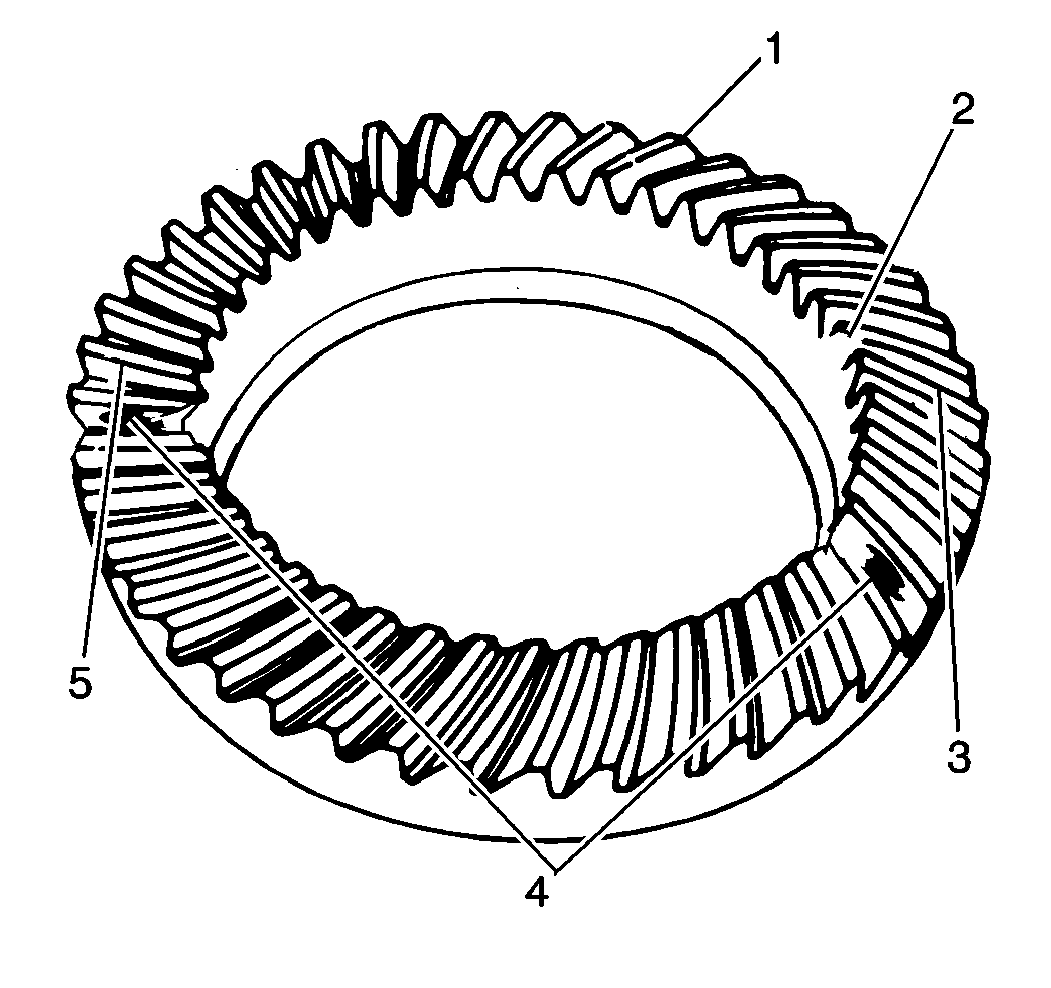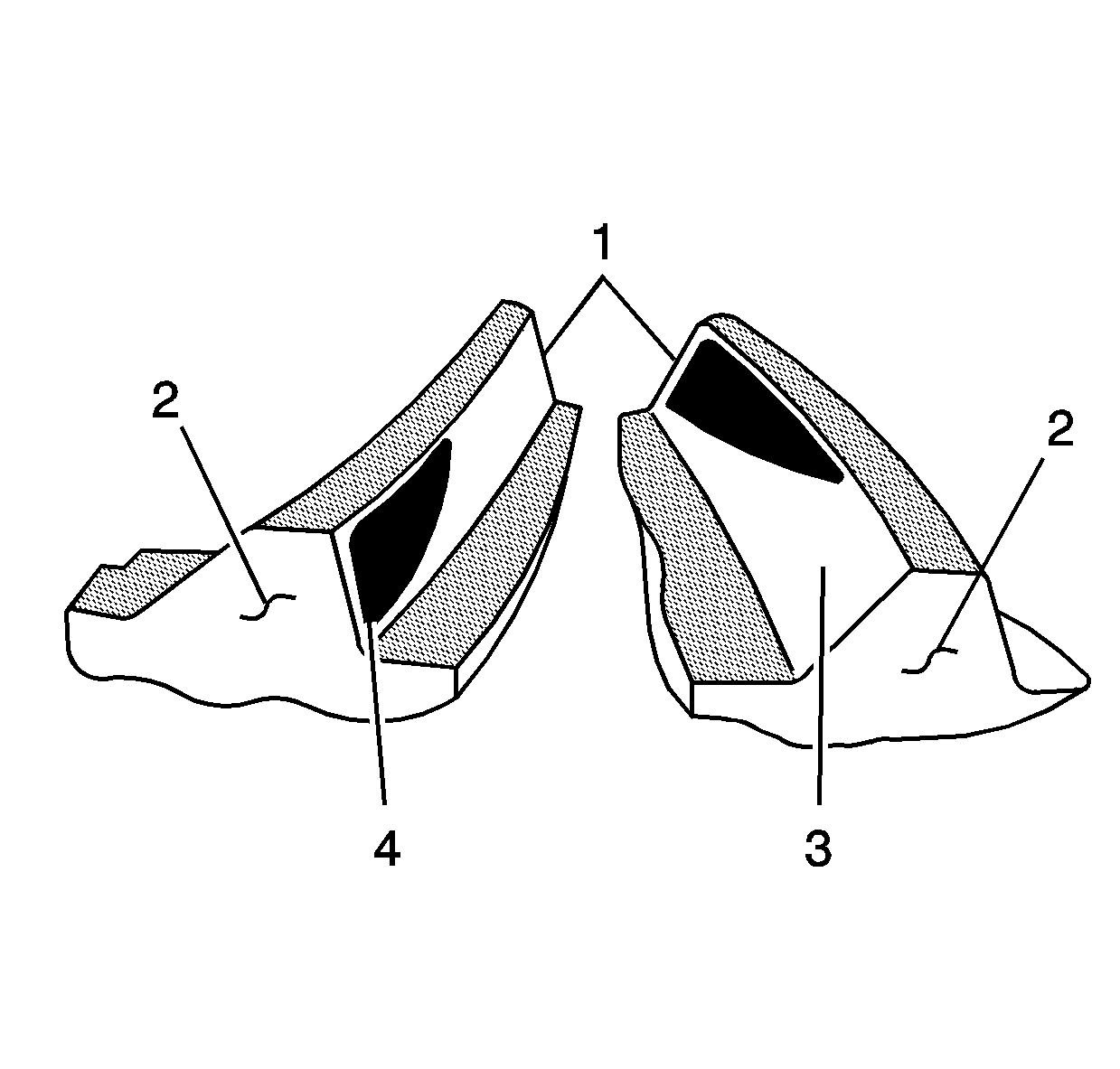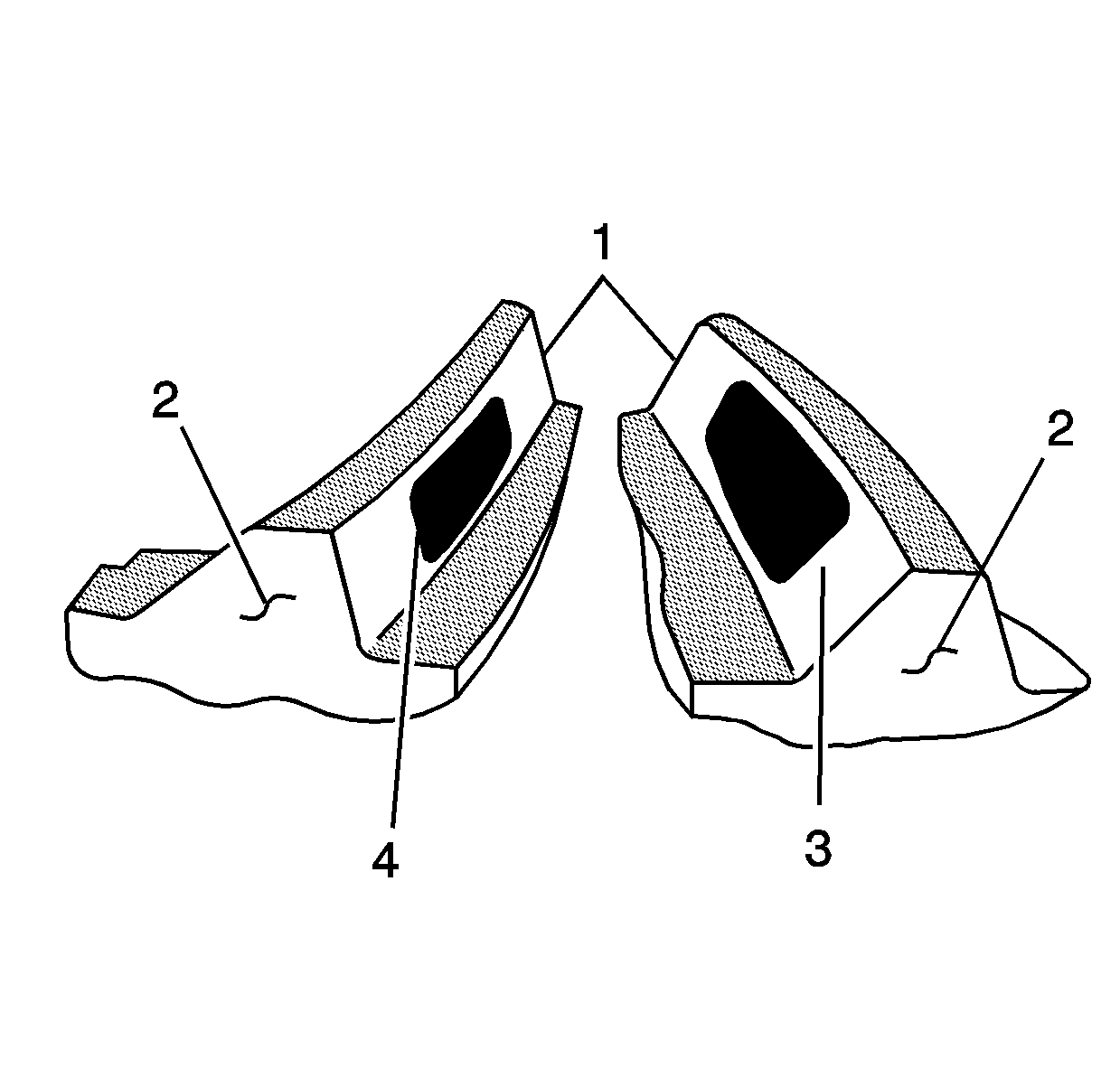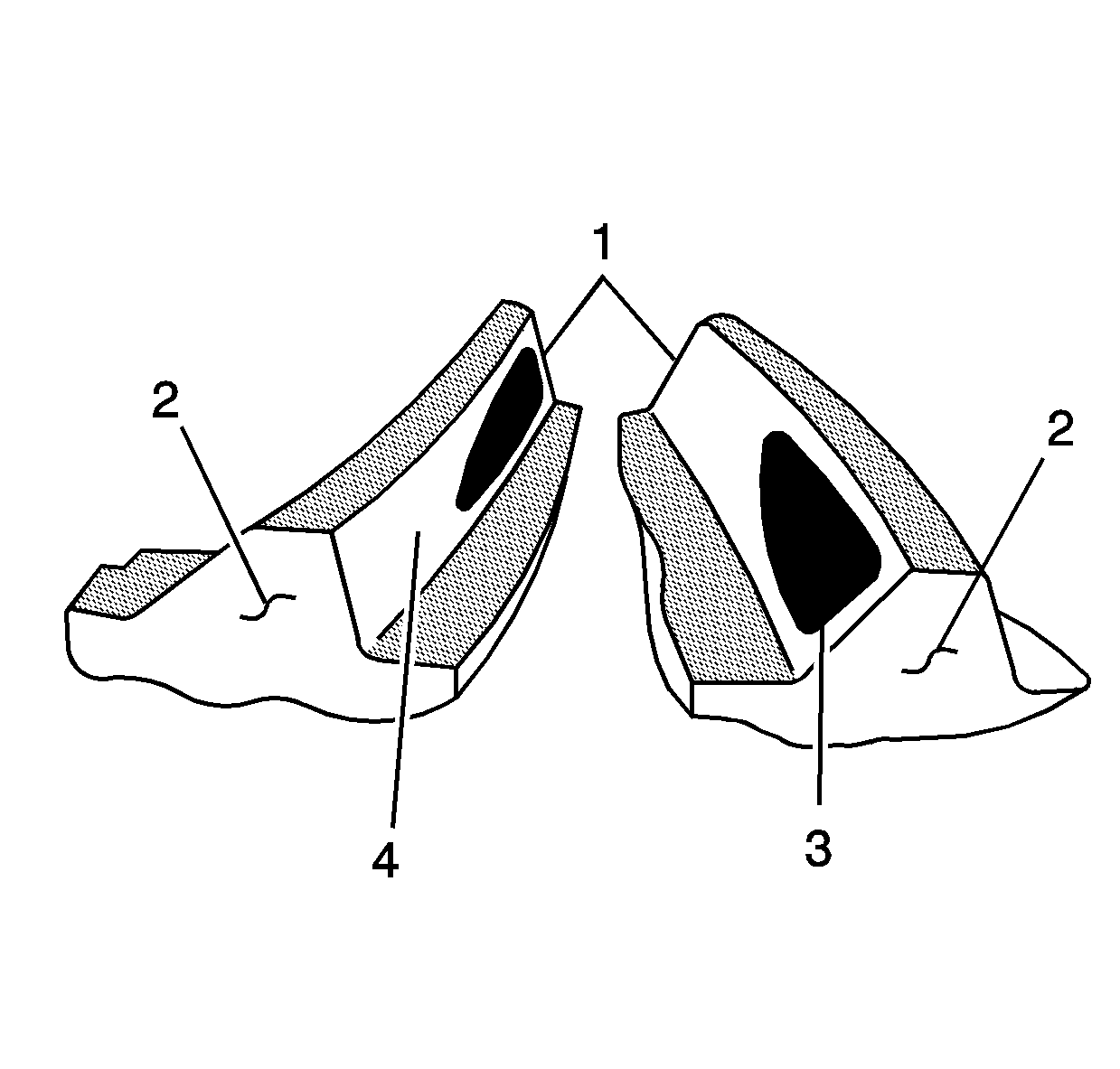Inspect the rear axle before disassembly. A close inspection
of the rear axle and the report of the malfunction will aid in determining
the type of repairs or adjustments that are necessary.
The following conditions may cause rear axle noise:
| • | The differential drive pinion gear inner bearing preload |
| • | The differential drive pinion gear outer bearing preload |
| • | The differential side bearing preload |
| • | Any combination of the above items |
Measure the following items before removing the differential case from
the housing:
| • | The total differential preload |
| • | The tooth contact pattern |
Record and analyze the above measurements before removing the differential
case from the housing.
Do not allow foreign matter (such as dirt or sand) near the rear axle.
The presence of foreign matter in the rear axle may cause rear axle failure.
Differential Ring Gear Tooth Nomenclature

The drive side (5) of
the differential ring gear tooth curves outward, or is convex.
The coast side (3) of the differential ring gear tooth curves inward,
or is concave.
The toe end (2) of the differential ring gear tooth is the end that
is nearest to the center of the differential ring gear.
The heel end (1) of the differential ring gear tooth is the end that
is farthest away from the center of the differential ring gear. The toe end
of the tooth is smaller than the heel end.
Effects Of Increasing Load On Tooth Contact Pattern
The load on the differential ring and the drive pinion gear is increased
during vehicle acceleration.
An increased load on the differential ring and the drive pinion gear
may cause the tooth contact to spread out. Under a very heavy load, the tooth
contact may extend from the near to the near heel on the drive side.
Increasingly heavier loads cause the following changes in tooth contact:
| • | The entire contact tends to shift toward the heel |
| • | The entire contact becomes broader with respect to the tops and
the bottoms of the teeth |
The following tooth contact pattern test will recreate the effects of
a light load. For this reason, the patterns that will be obtained by the following
test will only extend to about half of their potential expansion.
It is important to note that the contact pattern is centrally located
up and down on the face of the differential ring gear teeth.
The following conditions may cause a change in the tooth contact pattern
under a load:
| • | A drive pinon gear is insufficiently preloaded |
| • | The differential bearings are insufficiently preloaded |
Adjustments Affecting Tooth Contact
The following two adjustments will affect the tooth contact pattern:
| • | An adjustment to the backlash |
| • | An adjustment to the position of the drive pinion gear in the
rear axle housing |
The effects of bearing preloads are not readily apparent on hand-loaded
tooth contact pattern tests.
Differential bearing shims can be used in order to adjust the backlash.
The shims move the entire differential closer to or farther from the drive
pinion gear.
Bearing shims can also be used in order to set the differential bearing
preload.
| • | Make the following changes in order to increase the backlash: |
| - | Increase the thickness of the right bearings shim |
| - | Decrease the thickness of the left bearing shim |
| • | Make the following changes in order to decrease the backlash: |
| - | Decrease the thickness of the right bearings shim |
| - | Increase the thickness of the left bearing shim |
The position of the drive pinion gear can be adjusted by changing the
thickness of the shims between the following components:
| • | The drive pinion gear head |
| • | The race of the differential drive pinion gear inner bearing |
The drive pinion gear shim is used in the rear axle in order to compensate
for manufacturing tolerances.
| • | Increasing the shim thickness moves the drive pinion gear closer
to the centerline of the differential ring gear. |
| • | Decreasing shim thickness moves the drive pinion gear farther
away from the centerline of the differential ring gear. |
Effects Of Differential Drive Pinion Gear Position On Tooth Pattern

The following tooth contact
pattern exists when
the differential drive pinion gear is too far away from the centerline of
the differential ring gear:
| • | High heel (2) contact on the drive side (4) |
| • | High toe (1) contact on the coast side (3) |

Decreasing backlash in
order to move the differential
drive pinion gear closer to the centerline of the differential ring gear
will cause the following tooth contact pattern:
| • | High heel (2) contact on the drive side (4) moves down and toward
the toe (1). |
| • | High toe (1) contact on the coast side (3) moves down and toward
the heel (2). |

The following tooth contact
pattern exists when
the differential drive pinion gear is too close to the centerline of the
differential ring gear:
| • | Low toe (1) contact on the drive side (4) |
| • | Low heel (2) contact on the coast side (3) |

Increasing backlash in
order to move the differential drive pinion gear further away from the centerline
of the differential ring gear will cause the following tooth contact pattern
to exist:
| • | Low toe contact on the drive side (4) moves up and toward the
heel (2). |
| • | Low heel contact on the coast side (3) moves up and toward the
toe (1). |





